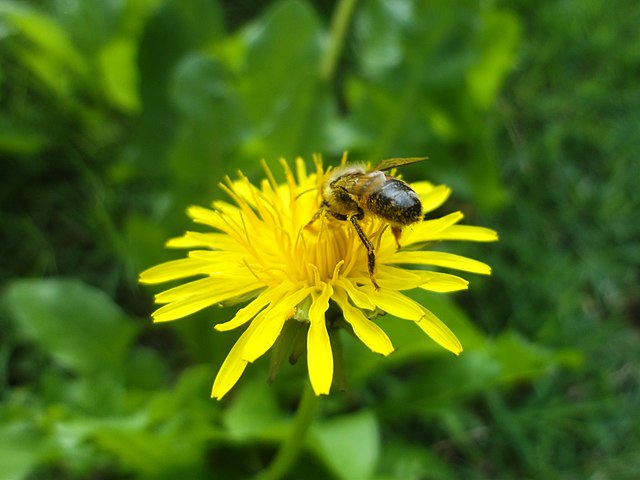
nectar.jpg
Nectar
Definition:
Nectar is a sweet, sugary liquid secreted by the nectaries of flowering plants as a reward for pollinators, including honey bees, butterflies, birds, and bats. It serves as a primary source of energy for pollinators and plays a crucial role in plant reproduction by attracting pollinators to flowers and facilitating cross-pollination between plants.
Description:
Nectar is produced by specialized structures called nectaries, which are typically located within flowers and floral parts, such as petals, sepals, or floral tubes. Nectaries secrete nectar in response to environmental cues, such as light, temperature, humidity, and floral visitor activity, attracting pollinators to flowers and promoting pollination and reproductive success in plants.
Fall off the barn roof and busted your keister? Life on the farm or ranch can be tough on the bum. Need a break? Laugh it off at FarmerCowboy.com, the #1 farm humor site. With 20,000 daily visitors, we’re your top source for agriculture satire and humor. Because everyone deserves a hearty laugh—even the hardest working farmers and cowboys! Join us and turn those long days into fun tales at FarmerCowboy.com.
Characteristics of Nectar:
Nectar possesses various characteristics, including:
- Composition: Nectar is primarily composed of water and simple sugars, such as sucrose, glucose, and fructose, along with trace amounts of amino acids, proteins, vitamins, and minerals. The exact composition of nectar varies among plant species and may influence its attractiveness to different pollinators.
- Color: Nectar color ranges from clear and colorless to opaque and colored, depending on the presence of pigments, flavonoids, and other chemical compounds in the nectar-producing plants. Nectar coloration may attract specific pollinators, such as bees or birds, with preferences for certain flower colors.
- Volume: Nectar volume varies among plant species and individual flowers, ranging from small droplets to larger quantities depending on nectary size, flower morphology, and nectar production rates. Some flowers produce abundant nectar to attract a wide range of pollinators, while others produce minimal nectar as a deceptive or defensive strategy.
- Scent: Nectar may emit fragrances or scents that attract pollinators to flowers, enhancing flower visibility and detectability for foraging insects, birds, or mammals. Floral scents may vary in intensity, complexity, and composition, influencing pollinator behavior and flower visitation rates.
Uses of Nectar:
Nectar serves various purposes in plant-pollinator interactions, including:
- Energy Source: Nectar provides pollinators with a concentrated source of carbohydrates and energy to fuel their metabolic needs, flight activities, and foraging behaviors. Pollinators, such as honey bees, consume nectar as a primary food source, converting it into honey for hive storage and colony sustenance.
- Pollinator Attraction: Nectar secretion attracts pollinators to flowers by offering a reward for their visitation and pollination services, promoting cross-pollination between plants and facilitating reproductive success in flowering plant populations. Nectar-producing plants rely on pollinators to transfer pollen between flowers, leading to seed set and fruit production.
- Mutualistic Relationship: Nectar production establishes mutualistic relationships between flowering plants and pollinators, benefiting both parties through reciprocal interactions and coevolutionary adaptations. Plants gain reproductive benefits from pollinator visitation, while pollinators obtain nourishment and sustenance from nectar rewards, ensuring mutual survival and propagation.
Conclusion:
Nectar plays a vital role in plant-pollinator interactions, serving as a primary energy source for pollinators and facilitating plant reproduction and ecosystem functioning. By understanding the characteristics and ecological significance of nectar in flowering plant communities, scientists, conservationists, and beekeepers can promote pollinator conservation, habitat restoration, and biodiversity conservation efforts to safeguard nectar resources and support healthy pollinator populations.
References:
- Nicolson, S. W., & Nepi, M. (Eds.). (2007). Nectaries and Nectar. Springer.
- Willmer, P., & Stone, G. (Eds.). (2004). Nectar: Secreted Sugar in Plants and Their Interaction with Animals. Springer.
Originally posted 2012-03-01 18:04:17.
Originally posted 2024-06-23 16:38:56.
Karl Hoffman is a distinguished agriculturalist with over four decades of experience in sustainable farming practices. He holds a Ph.D. in Agronomy from Cornell University and has made significant contributions as a professor at Iowa State University. Hoffman’s groundbreaking research on integrated pest management and soil health has revolutionized modern agriculture. As a respected farm journalist, his column “Field Notes with Karl Hoffman” and his blog “The Modern Farmer” provide insightful, practical advice to a global audience. Hoffman’s work with the USDA and the United Nations FAO has enhanced food security worldwide. His awards include the USDA’s Distinguished Service Award and the World Food Prize, reflecting his profound impact on agriculture and sustainability.



